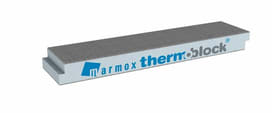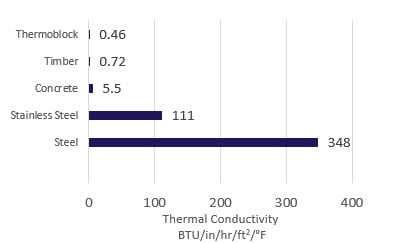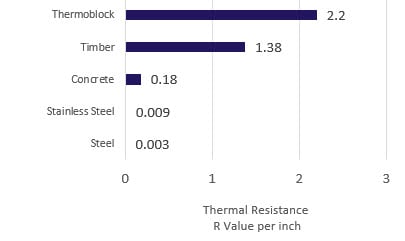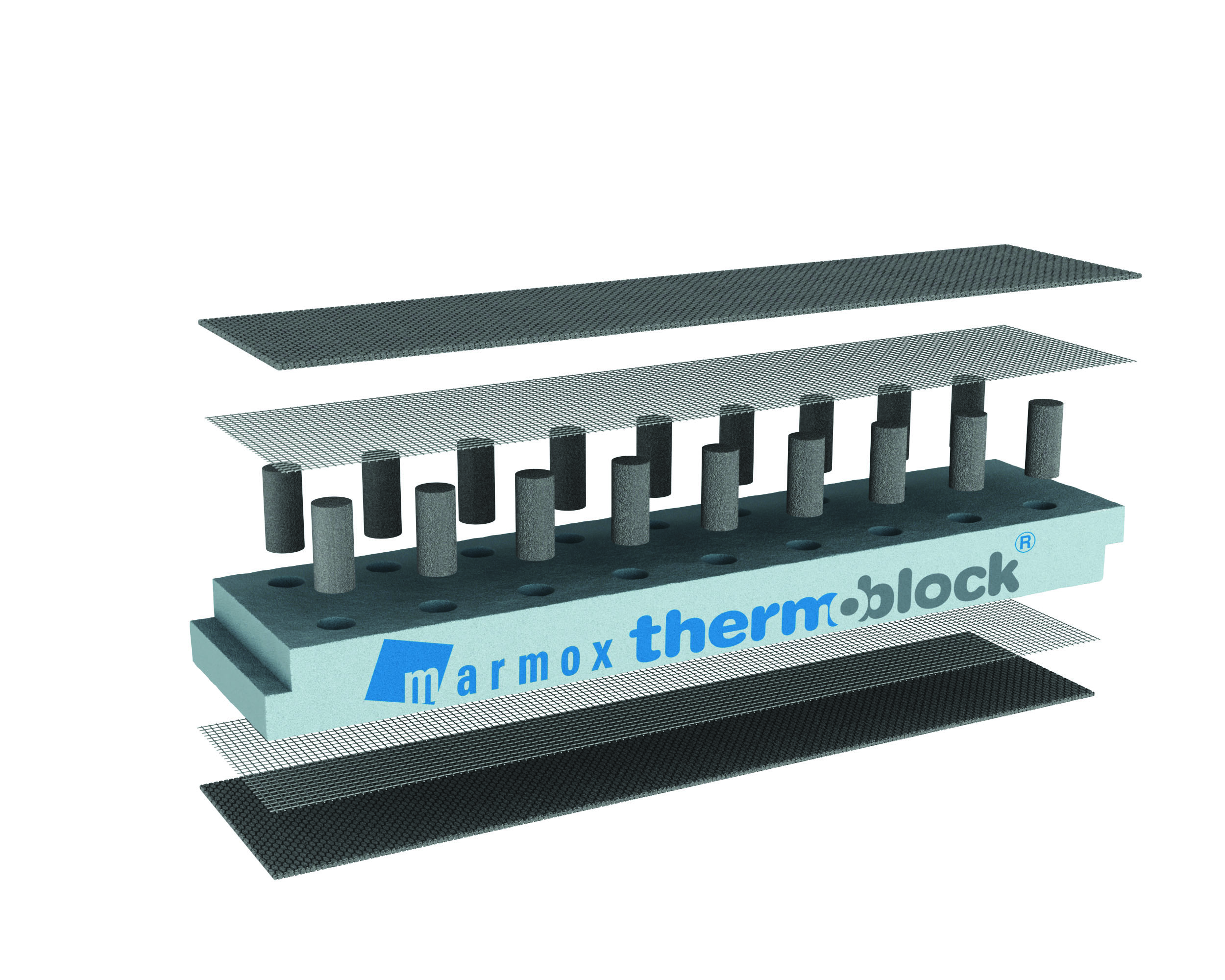
Foundation wall thermal break. Parapet thermal break. Thermoblock thermal break blocks reduce heat loss due to thermal bridging at foundation to wall transitions and roof to parapet intersections providing continuous insulation at the base of a wall, slab edge or roof parapet intersection where insulation is normally interrupted. They can also be used as a thermal break under door thresholds in Passive House building design. Thermoblock is functionally equivalent to Foamglas Perinsul cellular glass blocks.
The reinforced blocks support masonry, wood or steel framed walls and parapets. Unlike other closed cell, foam type thermal break materials, Thermoblock safely transfers load without deflection or long term creep. The top and bottom material surfaces provide for a mortar bond in masonry applications.
In addition to being red list free, the XPS material used in this product is manufactured with a blowing agent that has an ODP (ozone depleting potential) of zero and a GWP (global warming potential) of 0.29. It is HCFC and CFC free and contains zero HBCD (halogenated fire retardants).
Thermoblock thermal break blocks reduce heat loss at the wall to foundation transition. They can support up to 1,300 psi and can be used at the base of brick veneer or CMU block to help meet energy code and improve energy efficiency.

Thermoblock thermal break blocks are also used at the parapet to roof intersection to reduce heat loss where the parapet wall normally interrupts the roof to wall continuous insulation.
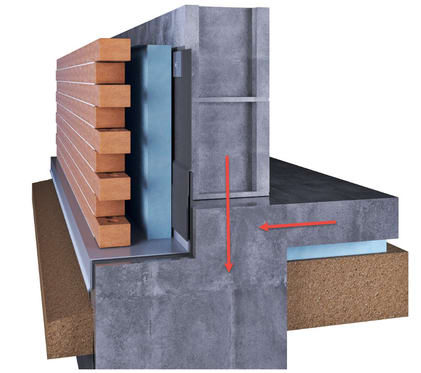
Heat loss due to wall to foundation transition
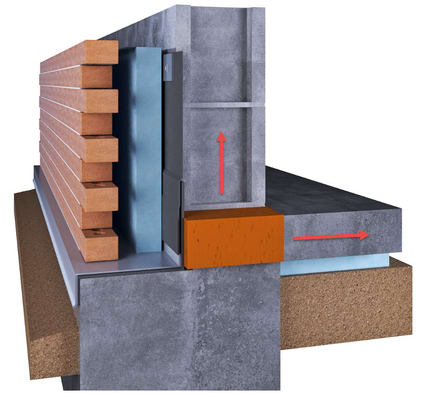
Reduced heat loss using Thermoblock thermal break block
Thermoblock is comprised of either a 2 1/2″ or 4″ thick core of fire resistant XPS insulation encasing two rows of high strength, low conductive, epoxy-concrete columns. The columns are fixed to the top and bottom surfaces of the block providing load transfer and high compressive strength. The surfaces are fiber reinforced polymer concrete which allow for a masonry mortar bond.




